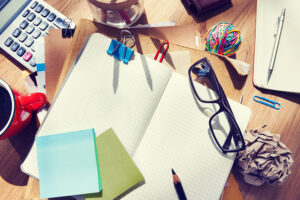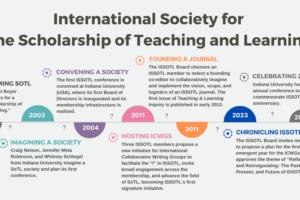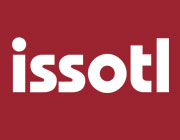New SoTL E-journal in Art History
by Virginia B. Spivey, Michelle Millar Fisher, and Renee McGarry on behalf of AHTR; Queries should be addressed to info@arthistorypp.org
Last year, Art History Teaching Resources (AHTR), a peer-populated open educational resource, began research and development on Art History Pedagogy and Practice (AHPP), a new online, open-access, and peer-reviewed journal launching in fall 2016. Devoted to the scholarship of teaching and learning in art history (SoTL-AH), and funded by the Samuel H. Kress Foundation, this project developed in response to two key issues: first, the recognition that art historians need opportunities to share rigorous pedagogical research produced in the field; and second, the reality that teaching in the discipline has historically been undervalued in both economic and scholarly terms.
To assess the situation, AHTR conducted a preliminary study, including a field-wide survey performed by the research firm of Randi Korn & Associates that drew over 1200 respondents in higher education, art museums, and other arts-related professions. Simultaneously, AHTR undertook a literature review examining 93 academic publications culled from art history, art and museum education, visual and cultural studies, and digital humanities. The findings, published in AHTR’s October 2015 White Paper, revealed that while art historians in higher education frequently talk about and seek out information related to their teaching, the discipline’s major periodicals and professional conferences give minimal attention to pedagogy.1 With this clear mandate for the creation of Art History Pedagogy and Practice, an advisory board was formed, a mission statement crafted, and a partnership established with the Graduate Center at the City University of New York to maintain the e-journal on CUNY’s Digital Commons repository. A Call For Papers has just been released, and publication of the inaugural issue is slated for October 2016.
The AHPP initiative builds on the success of AHTR as space for the exchange of pedagogical ideas in art history. Founded on dual goals to raise the value of the academic labor of teaching and to provide peer support across ranks of tenured, tenure-track, and contingent instructors, AHTR began as a collaboration between Michelle Millar Fisher and Karen Shelby at Baruch College in 2011. Fisher, then a Graduate Teaching Fellow with a background in museum education, and Shelby, then an Assistant Professor of Art History, organized meetings where colleagues shared teaching materials and experiences. Their popularity suggested potential for a digital forum to connect a wider community of practitioners, and gave rise to thearthistoryteachingresources.org website, which launched publicly in 2013 and has grown rapidly to nowaverage over 800 hits each day. Since January 2015, when the current 2.0 design debuted, it has received more than 267,000 views from over 91,000 educators in K-12, post-secondary institutions, and art museums, and from academic support staff including reference librarians and curriculum designers. AHTR’s administration has similarly expanded to a collective of art historians, working in different professional settings and ranging in experience from early career scholars to those well established in the field.
A key motivation in founding AHPP has been to reinforce the value, complexity, and rigor of the study of teaching and learning. We want SoTL in art history–and in other disciplines–to be recognized as a robust form of scholarship. We believe this mission can be successfully championed through the combination of OER and peer-reviewed publication. As the umbrella platform for AHPP, AHTR will continue to push the boundaries of traditional modes of scholarly communication as an OER that facilitates collaboration and sharing in a forum that requires shorter lead time and lighter peer review.
We are especially interested in questions of labor and value in art history teaching as we, in tandem, assess the sustainability of the scholarly publication model in a digital world. It is worth noting that a Kress grant in 2014 allowed AHTR to pay scholars small stipends to produce open access lesson plans available on the site, but practitioners contribute blog posts with no compensation and the site’s administrative oversight and operating costs are provided voluntarily by the leadership collective. Perhaps ironically, while collaborating to expand AHTR to include AHPP, it became quite clear that journal management would involve a further commitment of unrecognized, and often unpaid, labor.
As AHTR is not formally affiliated with an institution (partnership with the Graduate Center is beneficial and generous but informal) nor a 501c3, it is able to remain financially and administratively independent from the hierarchies established within academia. Maintaining this autonomy highlights the privileges and pitfalls of working for free as an academic, especially as more and more academics work outside the tenure track. Marginalized scholars, in particular, are more likely to do this sort of work and less likely to be rewarded for it in their career.
This concern speaks to another, equally important need to open up SoTL in art history–including our own project–to critical eyes and feedback around the intersectionality of race, gender, and discourses of global art history. In a field where a majority of white women perform much of the labor to teach a disciplinary narrative that continues to favor European art, the questions and ethics of labor in the classroom – and the labor of writing about the classroom – come to the foreground, as does the role of race and experience in shaping course content. We hope to bring these questions, and many more from the wider academic community, to bear on the scholarship of teaching and learning with Art History Pedagogy and Practice.
1 According to statistics from the College Art Association, an average 4% of the 220 sessions scheduled at the annual conference each year since 2005 have focused on pedagogy. Anecdotal evidence demonstrates attendance at these sessions is frequently standing room only. A combined total of 33 articles on pedagogical topics have appeared in The Art Bulletin and Art Journal since 1985. Notably, 29 of these are found in a single “pedagogy issue” of The Art Journal (Autumn, 1995). Apart from the paucity of this literature, the treatment of pedagogy in both periodicals typically comprises brief notes, personal reflections, or roundtable discussions, and not scholarly investigation into substantive problems of teaching and learning.




